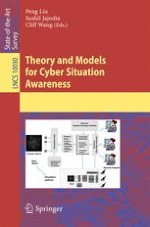2017 | OriginalPaper | Buchkapitel
Studying Analysts’ Data Triage Operations in Cyber Defense Situational Analysis
verfasst von : Chen Zhong, John Yen, Peng Liu, Rob F. Erbacher, Christopher Garneau, Bo Chen
Erschienen in: Theory and Models for Cyber Situation Awareness
Aktivieren Sie unsere intelligente Suche, um passende Fachinhalte oder Patente zu finden.
Wählen Sie Textabschnitte aus um mit Künstlicher Intelligenz passenden Patente zu finden. powered by
Markieren Sie Textabschnitte, um KI-gestützt weitere passende Inhalte zu finden. powered by
